|
When I first heard the news about Grizzly 168 over the summer, I cannot say I was shocked. Sometimes as scientists, researchers, and managers, we think we know everything that’s going on. The reality is, we do not. We are fortunate to be given the scantiest glimpse into a bears’ life through our ability to track and monitor movements and activity using new GPS technology, but not every bear is captured, and not every bear is collared or tagged. There very well could be a bear on the landscape that might be older than grizzly 168. Before we even knew grizzly 168 was still on the landscape, other bears like grizzlies 193, 585, 629 all reached or exceeded the age of 30. Surprisingly, one of the oldest bears captured was 32 years old, in the Cabinet Mountains (Kasworm & Manley 1988). More than likely, it is conceivable that another bear could have reached the ripe age of 34 and entirely avoided human contact during its entire life. Below you can find summaries of the natural life histories of the bears mentioned throughout the media, as well as capture tables. 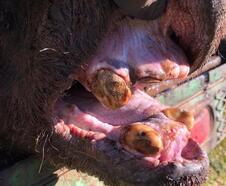 Photo: Image of the dentition of Grizzly 168 when he was captured during July 2020. Notice the severe wear and tear on the incisors and condition of his canines. Photo credit: Turnbull - WYGF Photo: Image of the dentition of Grizzly 168 when he was captured during July 2020. Notice the severe wear and tear on the incisors and condition of his canines. Photo credit: Turnbull - WYGF Grizzly 168: As a three-year-old, grizzly 168 was first captured August 13, 1989, at Pacific Creek in the Bridger-Teton National Forest (BTNF); the following year, during 1990, he dropped his collar. On August 31, 1991, grizzly 168 was captured again at Denoir - Long Creek in the Shoshone National Forest (SNF). Unlike his first capture, 168 would wear this collar for another two years until he dropped it in 1993. Three-years would pass until grizzly 168 was captured on May 16, 1996, at Diamond G Ranch, Dunoir R., WY; the following year, in 1997, he dropped his collar. Grizzly 168 would go 23 years without being captured for management or research purposes. During July 2020, grizzly 168 began to target calves (cattle) in the Wagon Creek area, located in the Upper Green River Basin. He was subsequently captured. On July 30, 2020, grizzly 168 was euthanized; his declining body condition and health made him a feeble candidate for relocation, and euthanasia was the most humane and ethical option feasible. As previously discussed, grizzly 168 sired a three-cub litter to grizzly 279 during 2005 or 2006, and there is potential he bred again during 2009 (at 23 years old). In 2019, he mated with another female. The adult female and her remaining cub were captured and relocated in 2018 after damaging a cargo trailer attempting to gorge on grain. Grizzly 279 Notes: Grizzly 279 was likely born in 1993 and first captured as a three-year-old at Blackrock Creek, Bridger Teton National Forest (BTNF). She would remain collared for the next several years until 1999 when she dropped her collar. A small window of time went by where she avoided human contact. Eventually, she was captured again on August 28, 2008, for management purposes near Sheridan Creek, SNF for cattle depredation and relocated; researchers did not observe her with cubs during 2008. Interestingly, during 2009, grizzly 279 was initially observed with four cubs-of-the-year. However, by 2010, she had lost two of the four. On August 3, 2010, grizzly 279 was captured again for management at Sheridan Creek, SNF, again involved with cattle depredations. Consequently, grizzly 279 was removed. At the time of her capture, she was accompanied by two yearling cubs, who were relocated. Grizzly 203 Notes: This bear was first a management action on August 25, 1992, at Flagstaff Creek, BTNF, for cattle depredations. The bear would later cast his collar. He was captured again on July 8, 1994, near Grizzly Creek, BTNF, and August 3, 1995, at North Fork Spread Creek, BTNF. This is one of two bears referred to as the “Togwotee Cattle Killers.” Grizzly 209 Notes: Grizzly 209 was likely born in 1987 and first captured July 14, 1993, northwest of Baldy Mountain, BTNF, for management purposes. He was captured and relocated for cattle depredation. In 1994, grizzly 209 was captured on June 18 at Spread Creek, BTNF. Unfortunately, 209 has a knack for killing cattle. On September 8, 1995, he was captured near Elk Ranch, Grand Teton National Park (GTNP), and relocated after killing cattle. Subsequently, on August 4, 1996, he was again captured at Elk Ranch, GTNP, for management purposes (livestock depredation) and consequently removed. 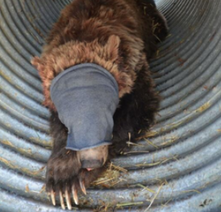 Photo: Grizzly 193 lies lightly anesthetized inside of a culvert trap while recovering from a capture work-up. Photo: USGS-IGBST Photo: Grizzly 193 lies lightly anesthetized inside of a culvert trap while recovering from a capture work-up. Photo: USGS-IGBST Grizzly 193 Notes: Grizzly 193 was likely born in 1986 and first captured as a five-year-old on August 29, 1991, at Mesa Pit Rd, Yellowstone National Park (YNP); she was captured again one month later, on September 29, 1991, at Mesa Pit Rd, YNP. During 1993, grizzly 193 cast her collar. Eight years would pass until 193 was captured again at Gibbon River, YNP, on October 2, 2001. During 2002 researchers observed her with two cubs-of-the-year (COY). She was captured on July 27, 2003, at Gibbon River, YNP; during 2003, researchers observed her with one yearling that likely perished. During 2004, grizzly 193 was observed with her second litter, this time with two COY. Another nine years later, grizzly 193 was captured June 20, 2013, at the Gibbon River, YNP, and recaptured on June 22. Subsequently, during 2014 she was captured on August 21 at the Gibbon River, YNP. This would be the last time 193 would be captured and handled- the Interagency Grizzly Bear Study Team (IGBST) would monitor her until 2016 when she cast her collar for the final time. Readers should note that between 2013-2016, no litters of cubs were observed. Grizzly 585 Notes: Likely born in 1978, grizzly 585 was only captured once on June 14, 2008, near the Yellowstone River, YNP. Grizzly 585 was 30 years old at the time of his capture. Grizzly 629 Notes: Likely born in 1978, grizzly 629 was captured once on October 12, 2009, at North Fork Shoshone, WY, for management; he was relocated. He was 31 years old at the time of capture. In addition to the information already published in various news and media outlets, I thought it would be useful to provide some additional information on the methods behind aging grizzlies (annular cementum aging). Please see the new tab link here. Works Cited
1 Comment
|
AuthorTyler Brasington is a native born and raised Pennsylvanian, yet proud current Wisconsin resident. He graduated from the University of Wisconsin-Whitewater with a B.S. in Environmental Science. Currently, Tyler is pursuing his masters in Natural Resources with the University of Wisconsin-Stevens Point. He has worked in Yellowstone National Park under the guidance and supervision of Dr. George Clokey and Dr. Jim Halfpenny. Disclaimer: The information and views expressed on this page do not necessarily represent the views of the Department of Interior, US Geological Survey, National Park Service or the United States Government.
The Greater Yellowstone Grizzly Project
www.yellowstonegrizzlyproject.org © 2021 Tyler Brasington All rights reserved. No portion of this website may be reproduced in any form without permission from the publisher, or appropriate authors, except as permitted by U.S. copyright law. For permissions contact: [email protected] Archives
February 2021
Categories |
- Welcome
- Home
- About
- Submit sightings
- Family Tracker
- Publications & Research
- Natural Life History
- Cementum Age Determination for Grizzly Bears
- Nutrition & Diet
- Radio Telemetry and Wildlife Tracking
- Chemical Immobilization and Wildlife Handling
- Infectious Disease in Bears
- Effects of Wildfire on Grizzly Bears: Yellowstone 1988
- Mortality Database
- Photo gallery
- Contact

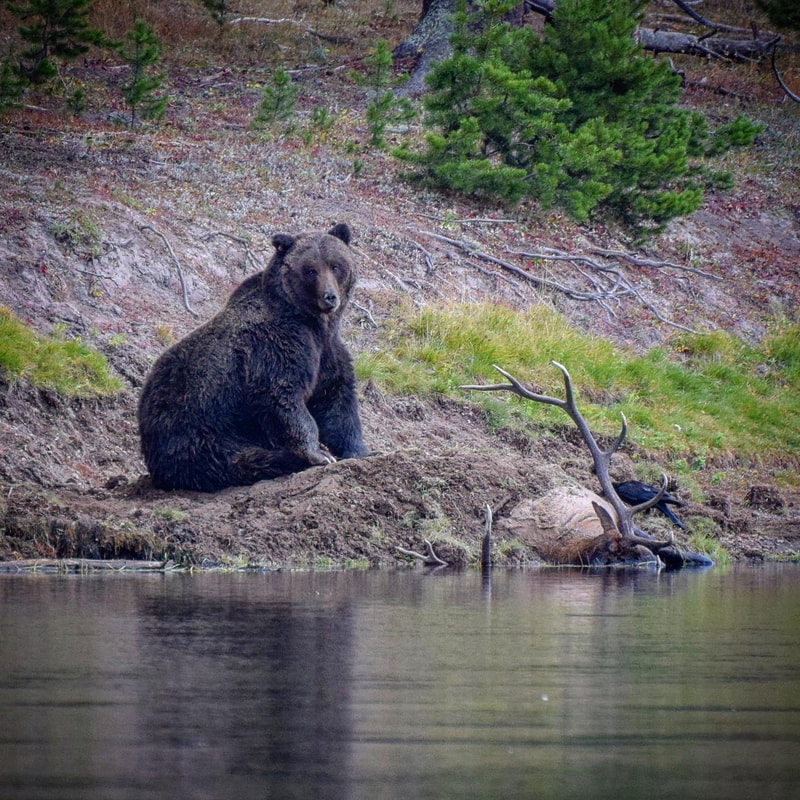
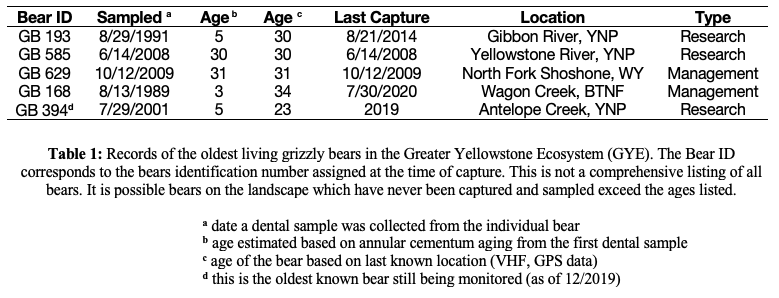







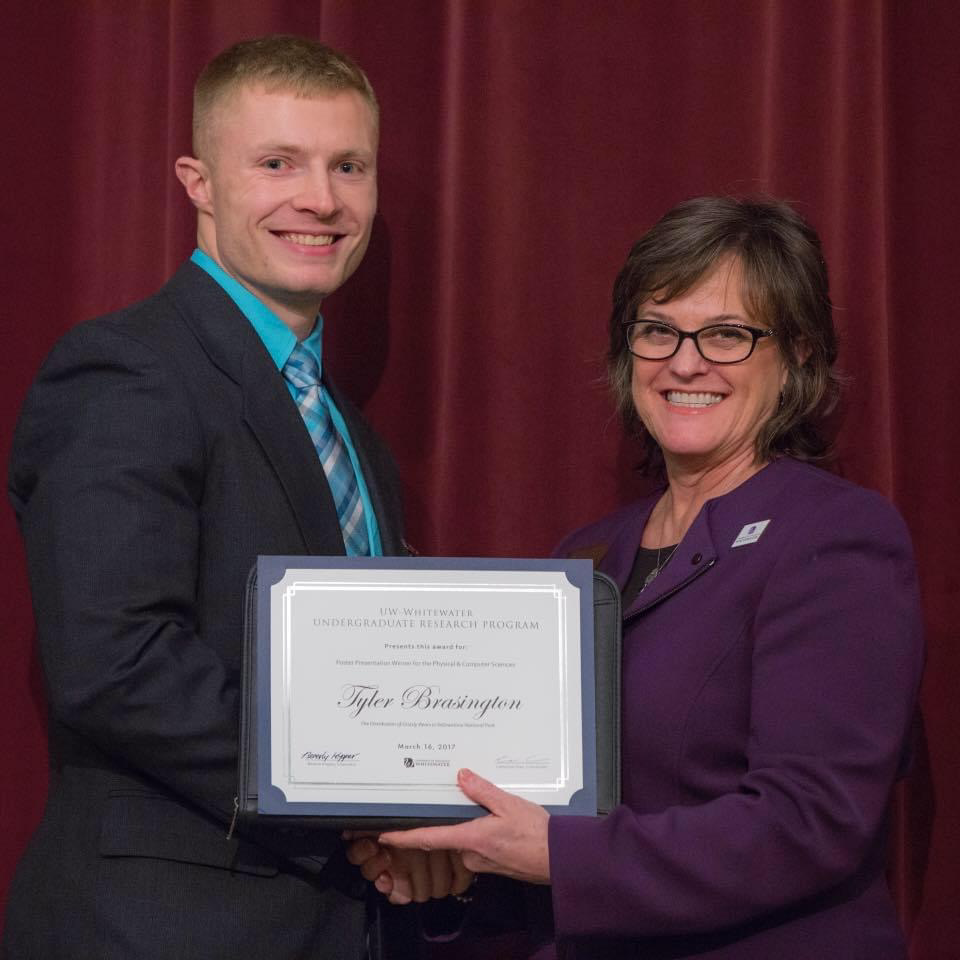

 RSS Feed
RSS Feed